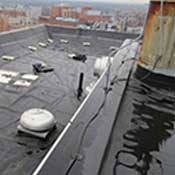Roof Asset Management
Many owners install a roofing system with a standard manufacturer's warranty and never again service the roof system until it has deteriorated and failed requiring full replacement in 10, 15, or maybe even 20 years. However, simple routine inspections and limited maintenance can extend the performance of the roofing system beyond the manufacturer's warranty period. Routine inspection and maintenance increases the life cycle of the roof system, reduces the potential for minor problems to develop into major leaks, and reduces the overall cost of the roof. The roof system is a primary component of the Building Envelope affording protection to the interior contents of the building. A Roof Asset Management Program establishes inspection protocols, standardized deficiency reporting documentation, work order development, and repair inspection protocols. Cannon Group is experienced in developing Roof Asset Management Programs for our clients to maximize their investment in the roof system while reducing the potential for business disruptions or damage due to water infiltration.
A Roof Asset Management Plan typically includes the following:
- Field survey including invasive and non-invasive investigation methods in order to collect data needed to perform an evaluation of the existing roof system.
- Develop base line technical drawings for the roof system illustrating the overall roof areas, mechanical equipment, roof drainage, and penetrations.
- Develop assessment reports outlining observations, conclusions, and recommendations.
- Develop technical specifications and construction drawings illustrating any needed repairs.
- Observe the on-going repair work for compliance with the intent of Cannon Group's design.
- Review contractor's application for payments.
- Perform routine biannual inspections of the roof to assess the condition of the roof and identify any areas potentially requiring maintenance. Additional inspections are recommended after periods of heavy rainfall and high winds.





